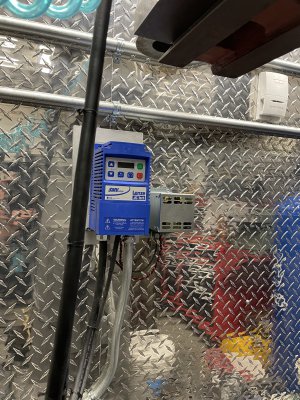Good VFD's can come with a connection pair to put a braking resistor, and
@mksj is right, that without one, a VFD has to handle harsh voltage situations. When you power a motor, you are also turning a generator that is making a (high) voltage fighting back, and it is only the leftover difference between the "back emf" and the applied voltage that makes it go forward, the applied voltage being the winner. When power is off, but everything is still spinning, the rotational inertia of everything that is moving is turning a generator that raises the voltage bus, and it can be to the point of damage!
I found with servo drives that the resistor is usually a big fat one, mounted with a heat sink. Usually rated to be able to take about 10% to 20% of the full rated power, over a few seconds. Know that with full control, you have to pay attention to VFD parameters that set the maximum deceleration rate. It can slam to a stop so hard you can break things. More commonly, setting for a swift smooth stop can cause currents that temporarily exceed a trip limit. Again, the parameters normally allow a value, and a time it may be exceeded, and by how much.
A resistor is a simple addition, but what it gives you is just great - provided the VFD has that facility.



